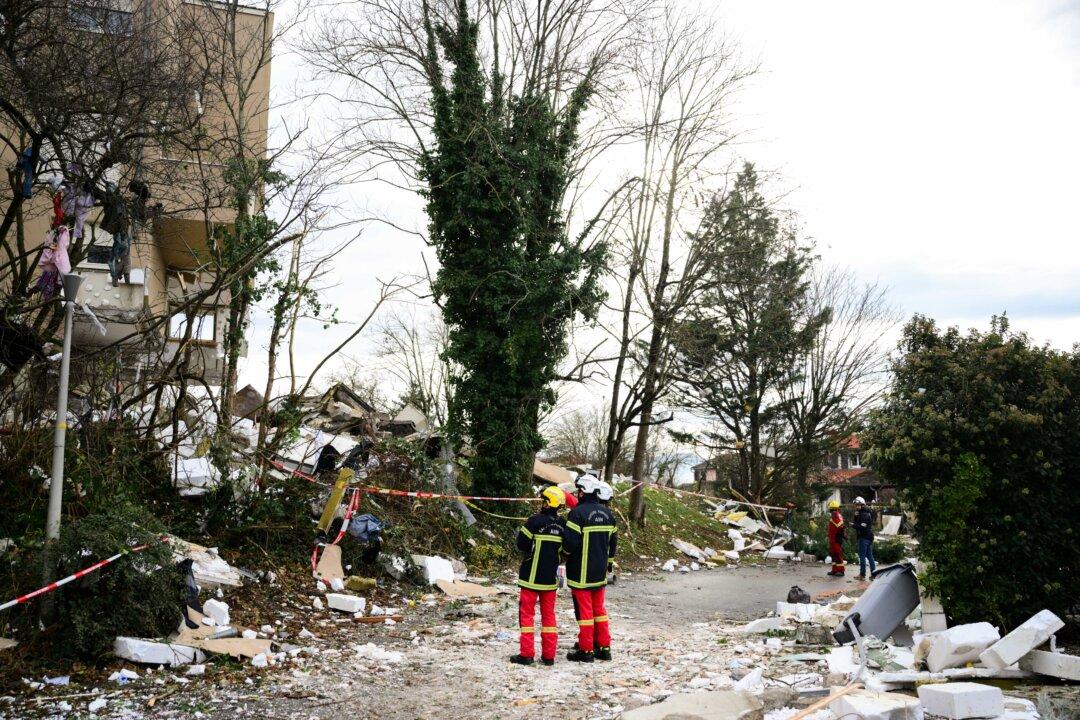China’s Yellow River Conservancy Commission (YRCC) reported that one-third of the Yellow River’s water is classified as “inferior Level V” water. According to China’s current water quality standard, Inferior Level V means that the water is unusable.
According to a BBC Chinese network report on November 25, titled “The 2007 Yellow River Water Resources Communiqué” recently issued by YRCC, the total length of the Yellow River is 13,492.7 km. Level I and II water was found in 2,174.0 km of the river and accounts for 16.1 percent of the total tested water; however, the Inferior level V water was found in a 4,557.6 km stretch, accounting for 33.8 percent of the river’s length.
According to China’s current water quality standards, Level I water can be consumed after simple sterilization, Level II is lightly polluted water that requires regular purification, Level III water is recommended only for swimming, Level IV water can be used in recreation and industrial areas where the water has no direct contact with human bodies, Level V water can be used for landscaping and agriculture, and the Inferior Level V water serves no function at all.
The communiqué showed that the waste water and polluted water discharged into the Yellow River basin in 2007 totaled 4,286 million tons, including 23.0 percent from residential use, 70.6 percent from manufacturing, and 6.4 percent from service industries.
“The Yellow River Water Resources Communiqué” is published once a year. The main contents include water saving dynamics, the use of water resources, analysis of water resources, investigation and assessment of water quality, sedimentation rates, important water issues, and so on.
Weiluo Wang, an expert on China water resources living in Germany, said that the Chinese regime spends little effort on managing the discharging of industrial waste water, which is why the industrial waste water has polluted 70 percent of the Yellow River.
Wang said China’s other major river, Huaihe River, is polluted even more seriously than the Yellow River. Another badly polluted river is the Liaohe River.
According to the regime’s report from last month, when satellite images of the Yellow River taken in 1990, 2000, and 2004 respectively were compared, Chinese scientists found that the wetlands of the original area of the Yellow River had shrunk from 380,000 square km to just under 340,000 square km in 2004—showing an average reduction of more than 2,800 square km per year.
Data from the Qinghai Provincial Meteorological Observatory also shows that different types of wetlands, swamplands, lakes, and rivers in the upper stream region of the Yellow River are shrinking. Swamps and lakes were reduced by about 10 percent from 1990 to 2004, and the river area shrank by more than 22 percent. According to on-site surveys, the speed of shrinkage of the wetlands in the Yellow River region has been increasing since 2005.
Scientists also found similar problems in the other major river in China—the Yangtze River. Wetlands shrank by 29 percent, and 17.5 percent of small lakes have dried up.
The problem is serious because the two major rivers, Yellow River and Yangtze River not only provide water for hundreds of millions of people, but also irrigate nearly half of China’s farmlands.
According to a BBC Chinese network report on November 25, titled “The 2007 Yellow River Water Resources Communiqué” recently issued by YRCC, the total length of the Yellow River is 13,492.7 km. Level I and II water was found in 2,174.0 km of the river and accounts for 16.1 percent of the total tested water; however, the Inferior level V water was found in a 4,557.6 km stretch, accounting for 33.8 percent of the river’s length.
According to China’s current water quality standards, Level I water can be consumed after simple sterilization, Level II is lightly polluted water that requires regular purification, Level III water is recommended only for swimming, Level IV water can be used in recreation and industrial areas where the water has no direct contact with human bodies, Level V water can be used for landscaping and agriculture, and the Inferior Level V water serves no function at all.
The communiqué showed that the waste water and polluted water discharged into the Yellow River basin in 2007 totaled 4,286 million tons, including 23.0 percent from residential use, 70.6 percent from manufacturing, and 6.4 percent from service industries.
“The Yellow River Water Resources Communiqué” is published once a year. The main contents include water saving dynamics, the use of water resources, analysis of water resources, investigation and assessment of water quality, sedimentation rates, important water issues, and so on.
Weiluo Wang, an expert on China water resources living in Germany, said that the Chinese regime spends little effort on managing the discharging of industrial waste water, which is why the industrial waste water has polluted 70 percent of the Yellow River.
Wang said China’s other major river, Huaihe River, is polluted even more seriously than the Yellow River. Another badly polluted river is the Liaohe River.
According to the regime’s report from last month, when satellite images of the Yellow River taken in 1990, 2000, and 2004 respectively were compared, Chinese scientists found that the wetlands of the original area of the Yellow River had shrunk from 380,000 square km to just under 340,000 square km in 2004—showing an average reduction of more than 2,800 square km per year.
Data from the Qinghai Provincial Meteorological Observatory also shows that different types of wetlands, swamplands, lakes, and rivers in the upper stream region of the Yellow River are shrinking. Swamps and lakes were reduced by about 10 percent from 1990 to 2004, and the river area shrank by more than 22 percent. According to on-site surveys, the speed of shrinkage of the wetlands in the Yellow River region has been increasing since 2005.
Scientists also found similar problems in the other major river in China—the Yangtze River. Wetlands shrank by 29 percent, and 17.5 percent of small lakes have dried up.
The problem is serious because the two major rivers, Yellow River and Yangtze River not only provide water for hundreds of millions of people, but also irrigate nearly half of China’s farmlands.




